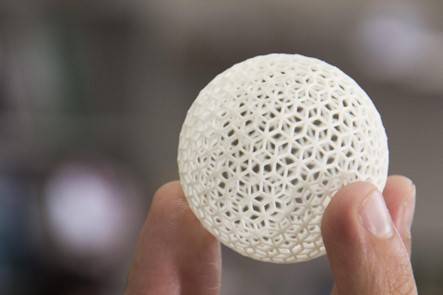How Much Does 3D Printing Cost?
The Cost of 3D Printing Ceramic: A Comprehensive Look
3D printing, or additive manufacturing, has taken the manufacturing world by storm in the past decade, but one material that has always been a bit more difficult is ceramic. Ceramics have unique properties that require special handling and equipment to produce quality parts. However, solutions have become more accessible with the advancements in 3D printing technology.
As industries such as aerospace, defense, and medical devices, begin to utilize 3D ceramic printing, cost has become a decisive factor in opting for 3D printed components. This article will delve into the specifics of 3D ceramic printing cost and will explore the various factors that affect the price. Hopefully, this will help you understand that in many cases, additive manufacturing is actually a low-cost option. Read on to learn more.
Material Choice
Regardless of the forming process, the ceramic material choice, as well as its grade and quality requirements, will significantly impact the manufacturing cost. For instance, alumina is readily available and relatively affordable, whereas zirconia is more expensive due to its higher raw material cost. For this reason, alumina is an excellent choice whenever its material properties are suitable for your application.
Component Design and Size
One common forming technique for additive manufacturing of ceramics is based on photo-polymerization using UV-curable resins and digital light projection (DLP) technology. A digital design file is created, taking into consideration various factors, including how the part will be supported during the printing process, how the wall-thickness will vary, and the intricacies of the part’s features. 3D printing can produce far more complex designs than any other ceramic forming process, and the complexity of this design, in and of itself, doesn’t necessarily affect the cost of printing.. General part size is more of a factor, as it directly correlates to the length of time per print and the number of parts that can be printed per batch.
Where the part design does directly affect the cost is in the need for post-print processing. 3D printing is capable of producing very intricate and complex parts, but some designs will require the addition of extra supports or features during the printing process that will need to be removed in a secondary cleaning process. Experienced engineers can work with customers to minimize the number of supports needed and to specify them in a manner that adds only minimal cleaning time.
So…. Why use 3D printing?
Some part designs are so complex that they can ONLY be produced with additive manufacturing, but simpler designs may be able to be produced by several processes. The last major point to consider is whether a mold or tooling is required. No molds are needed for the production of 3D printed ceramic parts, but other forming processes all have some added expense. Casting processes need patterns and molds. Uniaxial pressing requires dies. And injection molding, which is a fairly inexpensive way to produce complex parts in high volume, requires VERY expensive tooling. Plus, there is a long lead time for this tooling, typically several weeks or even months.
This issue is even more of a concern if your design isn’t set yet and you need to run some tests first before you can settle on a final configuration. Processes with expensive tooling can have prohibitive costs and lead time associated with multiple iterations, but this is exactly where 3D printing shines. Adjust your design quickly and efficiently until it’s optimized for your purpose, and then decide on the best process for making it in high volume. Taking all these factors into account, the cost of 3D ceramic printing can range from $5 to $1000 per part depending on material choice, the size and features of the part, and the order quantity. The prints can also vary in quality due to the factors mentioned above. However, working with skilled personnel who understand how to select the right material and optimize the production process will lead to more consistent and better-quality prints, ultimately saving costs and lead time compared to other processes.
Conclusion
In summary, with skilled engineering and planning, 3D printed parts can offer amazing design flexibility, reduced time to market, and lower cost than conventional ceramic processing.
● Elimination of tooling time and costs
● Net shape part production
● High resolution for small features
● Shortened development cycles
● Low or high-volume production
● Geometric design freedom
● Rapid/Parallel design iterations
Ready To Get Your 3D Prints?
If you still have questions about the 3D Printing process or additive manufacturing of ceramic components, and are ready to get started, contact SINTX today. Our team is here to help you understand your options, and make sure you get the right materials and prints for your job.
Categories: Additive Manufacturing | Authored by: tech-admin | Posted: 06/19/2023
